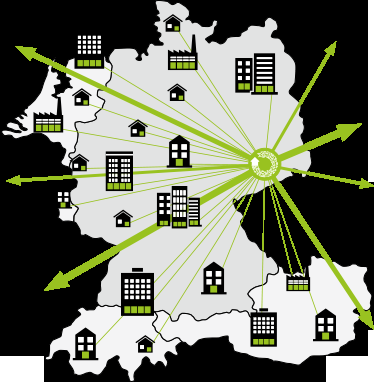November 14, 2014 weblog
'Green' data center option makes efficient use of server heat

Say what? Cloud computing servers installed in our homes? On Thursday, Evan Ackerman in IEEE Spectrum recalled a bold idea from Microsoft Research and University of Virginia authors in their paper "The Data Furnace: Heating Up with Cloud Computing," exploring the use of cloud computing servers installed in homes and offices to provide heat and hot water, inexpensively and efficiently.
The "data furnace concept," said Ackerman, is one in which the two sides win. The consumer gets heat and the cloud computing business reduces costs in building and maintaining data centers. Enter Cloud&Heat Technologies, a German company which uses the waste heat from their cloud servers to heat water and buildings. Cloud&Heat considers itself as a Green Cloud. Its service takes a different path from running big data centers which consume great amounts of electricity, much of which is lost as waste heat while enormous power-hungry air conditioning systems keep the temperatures down. Ackerman reported their heaters are big, insulated metal cabinets "crammed with hard drives, controller boards, and some fans." Users hook them up to water systems, electricity, and Internet. The company pays for the Internet connection and the power required to keep it running (Cloud&Heat said the supply of energy and servicing and maintenance are free of charge for the user for a guaranteed minimum period; costs of initial purchase are comparable to those for other heating systems) and the user gets warm air and hot water— as they quietly perform cloud computing tasks. "The Cloud&Heat customer pays only a one-time, initial purchase price of 12,000 euros. Cloud&Heat assumes all subsequent costs for a period of at least 15 years," they said.
A prerequisite for the use of Cloud&Heat is the presence of a buffer tank with a capacity of between 500 L and 2000 L, an Internet connection of at least 50 Mbit/s, a three-phase 400 V power connection and 3 x 16 A (cooker connection box) and a separate meter panel. "A centralized air handling system with controlled ventilation and extraction via heat exchangers is advantageous for the use of Cloud&Heat but not a requirement," according to the company.
How it works: the heating system involves a fireproof cabinet equipped with servers and installed in the building to be heated. The servers generate heat, which is fed into a buffer tank. The tank supplies the hot water system and heats the domestic hot water. The waste heat generated is used to heat the building. What happens in summer, or if the weather turns warm? A combination of Cloud&Heat with an air handling system means the heat not required is transported out of the building via a bypass. Cloud&Heat adapts the heat output to the building itself in accordance with the heat demand and the return temperature. Excess heat can also be dissipated, said the company, to the outside air via a re-cooler, fitted on the roof, for example.
But wait. In storing your data under a decentralized data center system, how do you know your data is secure? "The owners of the buildings do not have access to the server cabinets in the buildings. Only employees of Cloud&Heat have access to the server cabinets. Moreover, the server cabinets are protected through various measures and algorithms. The storage of data takes place using complete encryption," the company stated.
Server locations are in Germany only. The cloud is based on OpenStack (Havana release) and is compatible with cloud IaaS services from AWS [Amazon Web Services] (EC2, S3, EBS).
More information: www.cloudandheat.com/en/index.html#top
© 2014 Tech Xplore
















